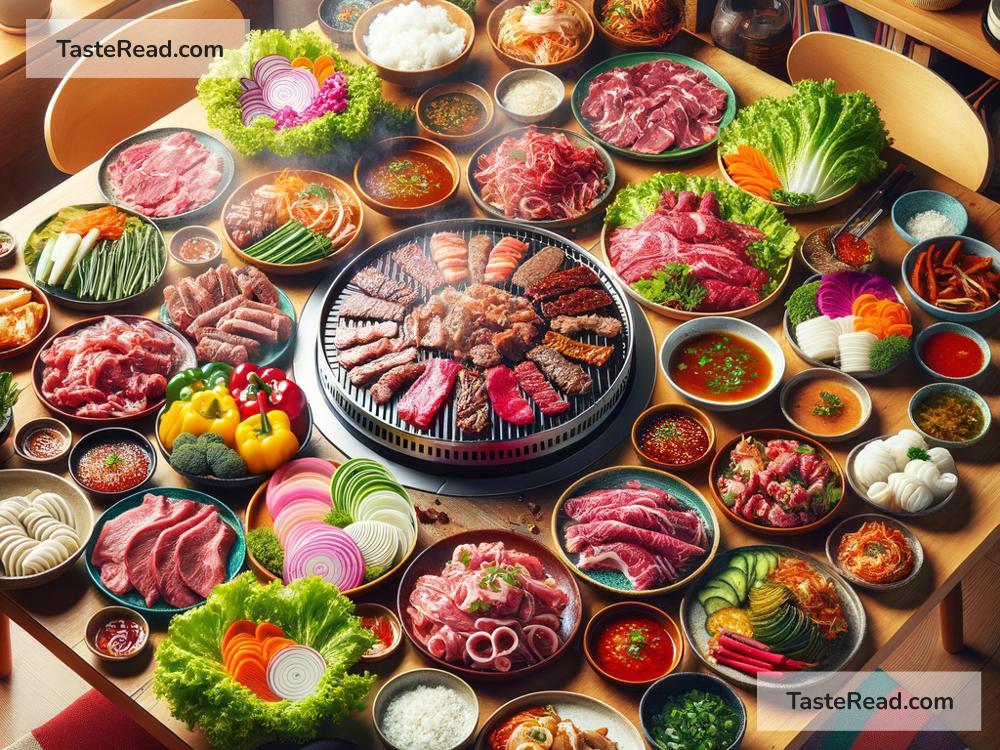How to Prepare Korean BBQ at Home: A Simple Guide
Korean BBQ is a delicious feast that is perfect for family meals or impressing guests. It’s a fun and interactive way of dining, where you cook your food right at the table and enjoy a mix of savory, sweet, and smoky flavors. But you don’t need to go to a Korean restaurant to enjoy this experience—you can easily create Korean BBQ at home. With a little preparation, you can turn your dining table into a DIY BBQ station. Here’s how to do it in simple steps.
Step 1: Gather Your Equipment
To prepare Korean BBQ at home, you will need the right equipment. Luckily, the tools needed are simple and easy to find:
-
Portable Grill or Griddle: You can use a tabletop electric, stovetop grill, or a regular frying pan. In Korean BBQ restaurants, special grills are used, but your regular kitchen tools will work fine.
-
Tongs: These are important for flipping the meat as it cooks.
-
Small Plates: Korean BBQ comes with many side dishes, so have enough plates or bowls to serve them.
-
Ventilation: Korean BBQ can make a lot of smoke. Turn on your kitchen fan, open a window, or prepare outside if possible.
Step 2: Choose Your Protein
The star of Korean BBQ is the meat! Traditional Korean BBQ uses a mix of proteins, and you can pick your favorites. Here are some popular choices:
-
Beef: Thinly sliced cuts like ribeye, brisket, or short ribs (called galbi) are commonly used. Marinate the beef or leave it plain—it’s flavorful either way.
-
Pork: Pork belly (samgyeopsal) is a classic choice. It’s juicy and cooks quickly. You can also use pork ribs or pork shoulder for variety.
-
Chicken: Boneless, skinless chicken thighs or drumsticks can be marinated for extra flavor.
-
Seafood: Shrimp, scallops, or squid are great alternatives if you prefer lighter proteins.
If you’re vegetarian or vegan, you can use tofu, mushrooms (like king oyster mushrooms), or plant-based meat substitutes.
Step 3: Make Flavorful Marinades
A good marinade brings Korean BBQ to life. You don’t need complicated ingredients—just mix them, and you’re ready to go. Here’s a simple recipe for a classic Korean BBQ marinade:
- Soy Sauce: ½ cup
- Brown Sugar or Honey: 2 tablespoons
- Sesame Oil: 1 tablespoon
- Garlic: 3 cloves (finely minced)
- Ginger: 1 teaspoon (grated)
- Rice Wine or Mirin: 1 tablespoon
- Black Pepper: A pinch
- Green Onions: Optional, sliced thin
Mix all the ingredients in a bowl and pour over your protein. Let it marinate in the fridge for at least 30 minutes (or up to 24 hours for more flavor). This marinade works well with beef, chicken, pork, and tofu.
Step 4: Prepare the Side Dishes
Side dishes, or banchan, are an essential part of Korean BBQ. They complement the meat and add refreshing flavors to every bite. Some common sides include:
- Kimchi: Fermented spicy cabbage is a staple in Korean cuisine.
- Pickled Vegetables: Carrots, cucumbers, or radishes soaked in sweet and tangy brine.
- Bean Sprouts: Lightly seasoned or sautéed with garlic and sesame oil.
- Seaweed Salad: A salty and crunchy side dish.
- Lettuce Leaves: Often used to wrap the grilled meat, along with rice and sauce.
- Rice: Steamed white rice makes the meal filling and balances the flavors.
You don’t need to make everything from scratch. Many Korean side dishes are available at Asian grocery stores, so you can buy them ready-made.
Step 5: Prepare Sauces and Condiments
Korean BBQ isn’t complete without dipping sauces. The two most popular sauces are:
- Samjang: This is a thick, spicy soybean paste mixed with sesame oil, garlic, and a bit of sugar.
- Gochujang: A spicy and slightly sweet chili paste.
Serve these sauces with your BBQ so everyone can customize their flavors.
Step 6: Set Up Your Table
The setup is what makes Korean BBQ fun! Arrange the meat, side dishes, dipping sauces, lettuce leaves, and rice around the table. Place the grill or griddle in the center so everyone can cook together. If you use a stovetop grill, you’ll need to cook the meat in the kitchen and bring it to the table.
Step 7: Start Grilling
Now the fun begins! Heat your grill or pan and brush it lightly with oil to prevent sticking. Place the meat on the grill and watch it sizzle. Korean BBQ cooks quickly since the meat is sliced thin. Flip it using tongs and remove it as soon as it’s cooked to avoid overcooking.
When it’s time to eat, wrap the grilled meat in a lettuce leaf with rice, sauce, and any side dish you like. This bite-sized combination is called a ssam, and it’s full of flavor!
Step 8: Enjoy the Experience
Korean BBQ isn’t just about eating—it’s an experience. Take your time, chat with friends or family, and enjoy the process of grilling and assembling your meal. The mix of smoky meat and vibrant side dishes makes every bite exciting.
Final Thoughts
Preparing Korean BBQ at home is easier than you might think. With simple tools and ingredients, you can recreate the flavors of Korea in your own kitchen. The best part is that Korean BBQ is customizable—choose your favorite meats, sides, and sauces to make it your own.
So, next time you’re craving Korean BBQ, don’t wait for a restaurant visit. Gather your ingredients, set up your table, and enjoy a fun and delicious meal at home. Happy grilling!


